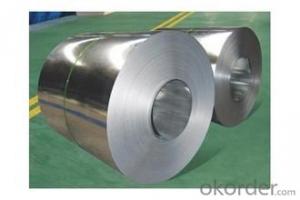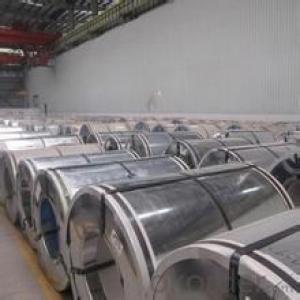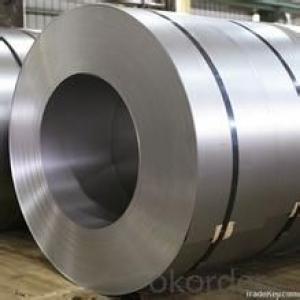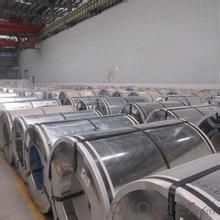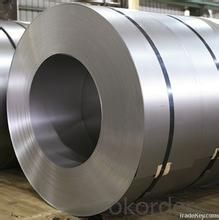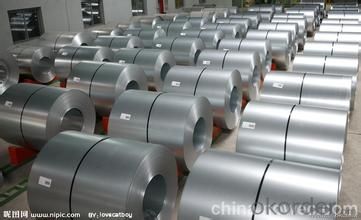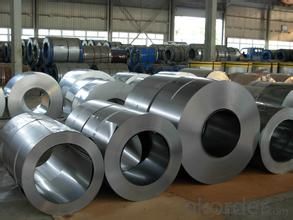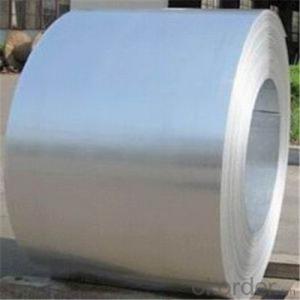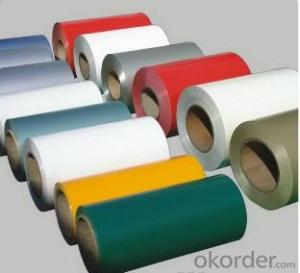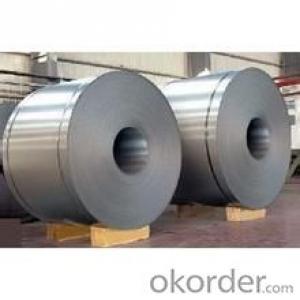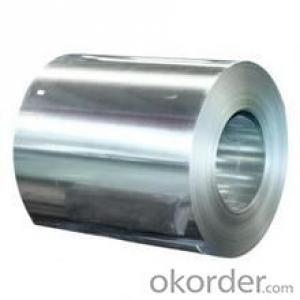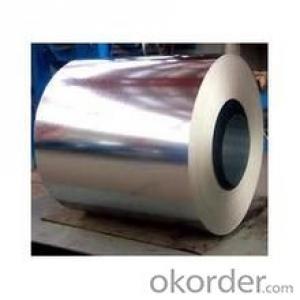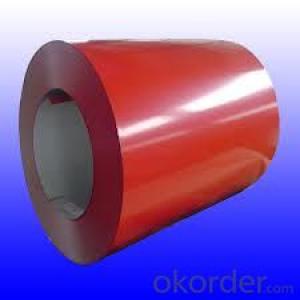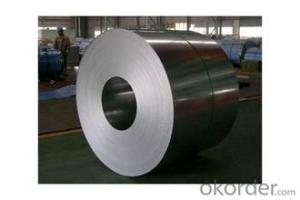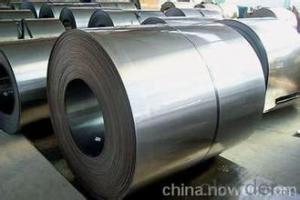good Hot-dip galvanized/ auzinc CSB Steel
- Loading Port:
- Tianjin
- Payment Terms:
- TT OR LC
- Min Order Qty:
- 100 m.t.
- Supply Capability:
- 5000000 m.t./month
OKorder Service Pledge
OKorder Financial Service
You Might Also Like
Description:
Hot-dip aluzinc steel sheet is substrated on cold rolled steel (CRC) in various strength and specification. Coating composition is 55% aluminum in weight ratio, 43.4% zinc, and 1.5% silicon, with excellent corrosion and heat resistance performance.
Specification:
1.Mateials:SGCC,DX51D / DX52D /S250,280GD
2.Size:width:600-1250mm(900mm,1215mm,1250mm,1000mm the most common)
thickness:0.15-2.0mm
length:1000-6000mm,as your require
3.Zinc coating :60-180g( as required)
4.Coil id:508mm
5.Coil weight: 3-5MT(as required)
6. Surface:regular/mini/zero spangle, chromated, skin pass, dry etc.
Applications :
Galvalume Coil widely used for roofing products, It is also the ideal base material for Prepainted Steel Coil.
1. roofing
2. gutters
3. unexposed automotive parts
4. appliances
5. furniture
6. outdoor cabinetry
Images:
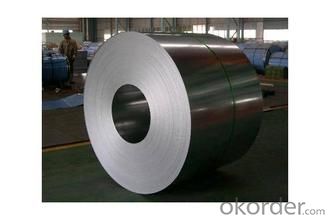
The hot-dip process is the process by which steel gets coated in layers of zinc to protect against rust. It is especially useful for countless outdoor and industrial applications.
- Q: What are the dimensions of steel coils?
- The dimensions of steel coils can vary depending on the specific product and application, but they typically range in thickness from 0.005 to 0.25 inches and in width from 0.5 to 72 inches. The length of steel coils can also vary, but it is commonly around 100 to 200 feet.
- Q: I am looking to weld some stainless steel using stainless electrodes. I was told that the arc welder needs to be able to run in DC in order to be able to weld stainless steel. Is this true? Or can you weld stainless steel with stainless electrodes with AC also?
- Arc or stick welding is not ideal for stainless steel. It is advisable to use MIG or TIG welding instead, with argon shield gas. I would only advise manual arc welding as a last resort, or for field repairs. Expect corrosion issues, and issues with excessive oxidation and porosity in your stainless welds. Manual arc welding is a dirty process and simply does not protect the weld puddle well enough from oxidation and carbon pickup, which are especially damaging in sensitive stainless alloys. As to whether to use AC or DC for stick welding, you should consult the instructions found on the box of electrodes. If polarity and current recommendations cannot be found, then you should contact the manufacturer and get it in writing. You should probably not make welding decisions based on advice from a sales representative. Firstly is is not documented. Secondly, sales representatives are not legally liable for damages caused by weld failures, YOU are.
- Q: What are the main factors that affect the quality of steel coils?
- The main factors that affect the quality of steel coils include the composition and purity of the steel, the manufacturing process, temperature control during production, and the level of surface defects or imperfections. Additionally, the storage and handling conditions, as well as the expertise of the manufacturer, can also impact the quality of the steel coils.
- Q: What is the average size of a steel coil?
- The average size of a steel coil can vary depending on the specific application and industry. However, in general, steel coils typically have a width ranging from 600mm to 2000mm and a weight between 2 to 25 metric tons.
- Q: What are the different types of steel coil slitting blades?
- There are several different types of steel coil slitting blades, each designed for specific applications and materials. Some of the most common types include: 1. Circular slitting blades: These are the most commonly used blades for slitting steel coils. They are circular in shape and have a sharp edge that cuts through the coil as it rotates. Circular slitting blades can be made from various materials, such as high-speed steel or tungsten carbide, depending on the desired cutting performance and durability. 2. Arbors: Arbors are another type of steel coil slitting blade that is used in conjunction with circular slitting blades. They are cylindrical in shape and hold the circular blade in place, allowing for precise and consistent slitting of the coil. 3. Shear slitting blades: Shear slitting blades are used for cutting thicker and harder materials, such as stainless steel or aluminum. They have a straight edge and work by shearing the material apart, rather than cutting through it like circular blades. Shear slitting blades are typically made from high-quality tool steel to withstand the high forces involved in cutting thicker materials. 4. Crush cut slitting blades: Crush cut blades are used for slitting softer materials, such as paper or plastic. These blades have a blunt edge that crushes and tears the material, rather than cutting it cleanly. Crush cut blades are often made from materials like carbon steel or hardened stainless steel. 5. Razor slitting blades: Razor slitting blades are used for slitting delicate materials that require a clean and precise cut, such as thin films or foils. These blades have an extremely sharp edge that slices through the material without causing any damage or distortion. Razor slitting blades are typically made from high-quality stainless steel or tungsten carbide. It is important to select the appropriate type of steel coil slitting blade based on the specific application, material, and desired cutting performance. The choice of blade will greatly impact the quality and efficiency of the slitting process.
- Q: I saw a 27 sedan and a 27 Pick-up one had wood wheels the other steel, respectively. Witch one was original or were they both original
- Wooden Spoke Wheels
- Q: How are steel coils used in the production of construction components?
- Steel coils serve various purposes in the production of construction components. One way they are commonly used is in the manufacturing of steel beams and columns, which are integral to the structure of buildings and other large constructions. The steel coils are processed and molded into the desired dimensions, then cut and welded to create the beams and columns. In addition, steel coils are employed in the production of roofing and wall cladding materials for construction purposes. These coils are often coated with protective layers to enhance their durability and resistance to corrosion. Subsequently, the coils are shaped and formed into roofing sheets, wall panels, or siding materials that not only add aesthetic appeal, but also provide functional protection for the building. Another significant application of steel coils in construction is for the production of reinforcing bars, commonly referred to as rebar. Rebar is used to reinforce and stabilize concrete structures, such as foundations, slabs, and walls. The steel coils are processed and cut into specific lengths, then shaped and twisted to form the required reinforcement bars, which are subsequently embedded within the concrete during construction. Moreover, steel coils can be utilized in the production of various other construction components, including pipes, tubes, and profiles. These components serve purposes such as plumbing, heating, ventilation, and other structural applications. The steel coils undergo different manufacturing processes, such as rolling, welding, and shaping, to achieve the desired dimensions and properties of these components. In conclusion, the significance of steel coils in the production of construction components cannot be overstated. They are crucial in the manufacture of steel beams, columns, roofing and wall cladding materials, reinforcing bars, pipes, tubes, and profiles. These components are indispensable to the construction industry, as they provide strength, durability, and functionality to buildings and other structures.
- Q: I have a 03 jeep wrangler and looking to upgrade to black wheels. I was wondering if the difference between steel and alloy wheels is worth paying double.
- steel is steel is steel- they will always be heavy you would have to weigh them to find out--NOW if you are going to alloy wheels they are typically aluminum and yes they are lighter -this is good because it lightens your un-sprung weight and is less harmful to your suspension-good for your auto
- Q: How are steel coils inspected for width variations?
- Steel coils are inspected for width variations by using a non-contact laser measurement system. This system measures the width of the coil at various points along its length, ensuring that it meets the required specifications.
- Q: How do steel coils contribute to energy performance in buildings?
- Steel coils contribute to energy performance in buildings primarily through their use in HVAC systems. Steel coils are commonly used in heating, ventilation, and air conditioning (HVAC) systems as heat exchangers or condenser coils. These coils help in transferring heat between the indoor and outdoor environments, allowing for effective heating or cooling of the building. The high thermal conductivity of steel enables efficient heat transfer, optimizing energy usage and enhancing the overall energy performance of the building. By facilitating appropriate temperature control and reducing energy consumption, steel coils play a vital role in improving the energy efficiency of buildings.
Send your message to us
good Hot-dip galvanized/ auzinc CSB Steel
- Loading Port:
- Tianjin
- Payment Terms:
- TT OR LC
- Min Order Qty:
- 100 m.t.
- Supply Capability:
- 5000000 m.t./month
OKorder Service Pledge
OKorder Financial Service
Similar products
Hot products
Hot Searches
Related keywords
